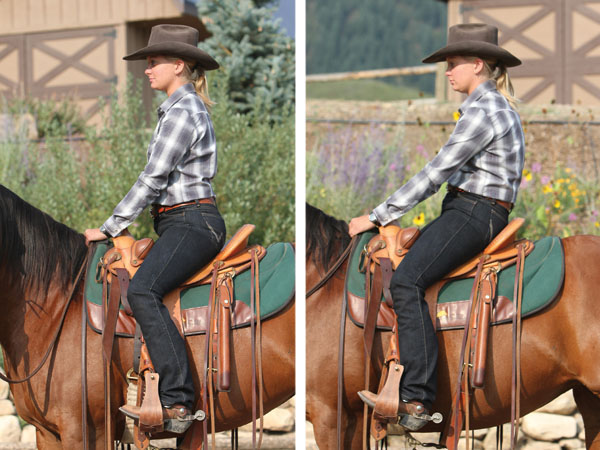Do you ever think about your seat bones when you ride? Are you even aware of their power to communicate with your horse?

Try this: Find a chair with a solid bottom but some cushioning. Sit on the chair in an upright posture. Put your hands on your hips and find your hip bones. From there, slide your hands straight down and directly under your bottom, rocking as need be to get the fingertips of each hand all the way underneath you. To identify your seat bones, simply move your upper body in any fashion—from side to side works especially well. Feel that on your fingertips?
Now try moving your pelvis around as subtly as you can. Try to do it so that you cannot feel your seat bones moving.
Can’t do it, can you?
Your horse can feel that, too! And if you think your saddle and pads or blankets might keep him from feeling it, listen to what my friend and frequent H&R contributorJulie Goodnight has to say about it:
“Absolutely the horse feels your seat bones! The horse’s back, where you sit, is a highly sensitive area. You have more contact with your horse through your seat than through any other aid, whether you ride Western or English—and a Western saddle with a flexible tree offers especially sensitive feel through the seat bones.”
How you sit in your saddle affects just how well your seat bones “communicate.” To see what I mean, sit on your hands again, with maximum pressure on your fingertips, then arch your back and lean forward a just a bit. See how this raises your seat bones up and away?
Now try slouching and sitting back on your pockets, and see how this affects your seat bones’ contact with your fingers as the bones slide forward.
This is one of the reasons why advice on rider biomechanics always stresses sitting up straight, without perching forward or slouching back. Either will compromise your seat bone contact in addition to causing other rider errors. The ideal is to sit on the triangle formed by your pubic bone and seat bones, tucking your rear end under just a bit.
From this position, the best riders use their seat bones in concert with their weight and other aids to finesse turns, lateral movements, lope departs, lead changes, and many other maneuvers.
To become more familiar with how your seat bones can influence your horse, experiment at a walk. Sitting upright with your seat bones planted in the saddle, try weighting one seat bone without giving any other cue as your horse walks a straight line. If you tip your pelvis to bear down on your left seat bone, for example, you may find that it drives him to the right, or even causes him to drift to the left as he attempts to place his center of gravity under yours.
Experiment with other movements of your seat bones, and see how your horse reacts. Also practice observing what it feels like when your seat bones are connected, as compared to when you’ve lost contact with your seat.
Ask someone on the ground to verify that you’re sitting evenly in the saddle when you think you are—in other words, when it feels like you’re sitting evenly. This is important because a slightly off-kilter position, with one seat bone pressing more than the other, can begin to feel “normal” over time.
One more tip: The stronger your core muscles are, the more subtle control you’ll have over your seat bones.






